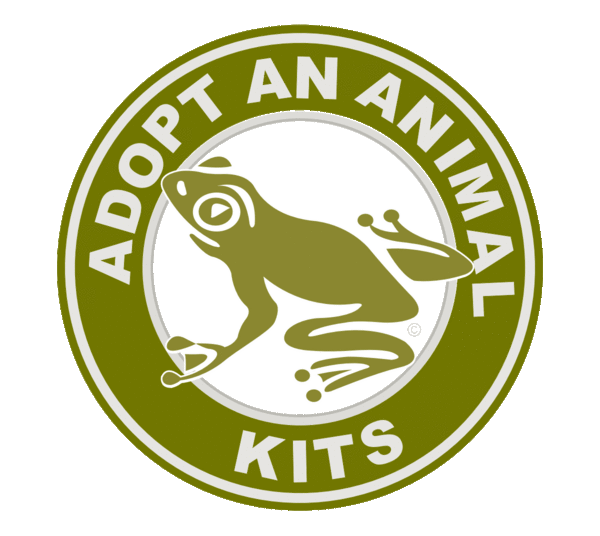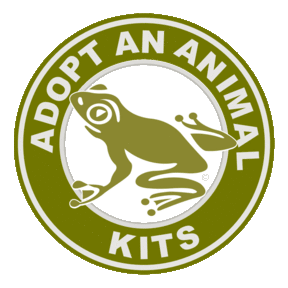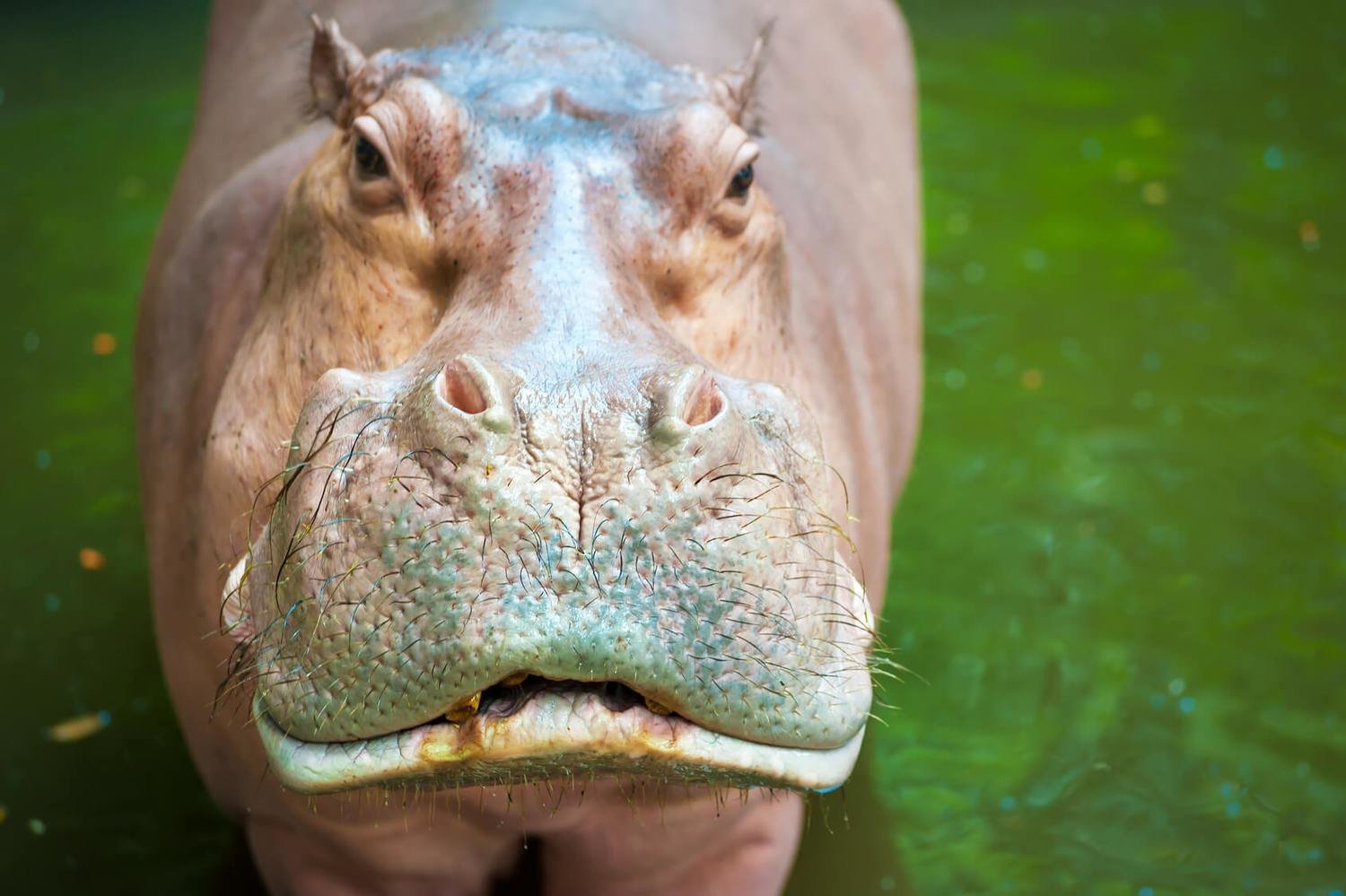

Adopt An Animal Kits
Adopt An Animal symbolically. Your Adopt An Animal Kit comes in a Deluxe Folder and includes: Glossy Photo of Your Adopted Animal; Adopt An Animal Adoption Certificate; Fact Sheet About Your Adopted Animal; Help Animals Info Cards Packed With Information On Animal Issues & How You Can Help Animals And The Environment. Adopt An Animal for Yourself or as a Gift.
Adopt A Hippopotamus
Adopt A Hippo
Your Adopt A Hippopotamus Kit comes in a Deluxe Folder and includes:
- Glossy Photo Of Your Adopted Hippopotamus
- Adopt A Hippopotamus Adoption Certificate
- Fact Sheet About Your Adopted Hippopotamus
- Help Animals Info Cards Packed With Information On Animal Issues & How You Can Help Animals And The Environment
Adopt A Hippopotamus Kits make great gifts and can be sent directly to the recipient. Simply supply the recipient's name and mailing address as shipping information. We'll even include a letter stating the Adopt An Animal Kit is from you.
Adopt An Animal symbolic adoption is a one time fee. Adopt an animal for yourself or order an Adopt An Animal Kit as a gift. Help make a difference for animals - Adopt An Animal Today!
Adopt A Hippo
Hippopotamus is an herbivorous, river-living mammal of tropical Africa. The large hippopotamus, hippopotamus amphibius, has a short-legged, broad body with a tough gray or brown hide. Males stand about 5 feet high at the shoulder and weigh about 5 tons; females are slightly smaller. Their mouths are wide, and the incisors and lower canines are large ivory tusks that grow throughout life. Their eyes are near the top of their heads, so they can see when nearly submerged.
The large hippopotamus outweighs all the many fresh water semi-aquatic mammals that inhabit our rivers, lakes and streams. The pygmy hippopotamus, though, are only 30 inches tall at the shoulder and weigh about 400 pounds. They tend to be solitary and spend much of their time on the shore, sleeping by day in thickets.
Recent DNA studies indicate that whales are most closely related to hippopotamuses. Hippopotamuses are classified in the phylum Chordata, subphylum Vertebrata, class Mammalia, order Artiodactyla, family Hippopotamidae.
Hippopotamuses usually live in herds of about 15 animals. Much of their time is spent standing or swimming underwater, where they feed on aquatic plants; they must rise to breathe every 5 minutes or so. At night, groups of animals feed on the shore.
The ancient Egyptians both feared and revered the hippopotamus. The word hippopotamus comes from the Greek for “river horse” and the hippo, once indigenous to Egypt, flourished there. They grazed along the fertile banks of the Nile River and swimming in its muddy waters. Hippos may seem slow and lumbering, but they can be ferocious, deadly killers. These prolific animals multiplied until the river was thick with them. They destroyed crops, up ended fishing boats and killed the men as they fell into the river. The ancient kings found sport in great hippopotamus hunts that would thin out the herds. Hunts became bloody battles between man and beast. The hippo is no longer found in Egypt. They were wiped out of that country in modern times because of the crop damage they caused, but the hippo still thrives in other parts of Africa.
After elephants and the white rhinoceros, the hippopotamus is the third largest land mammal on earth. On land, the enormous weight of a hippo is distributed evenly and is adequately supported by the four webbed toes on each of their feet. These animals are grayish in color with thick skin that is virtually hairless. The hippo has no sweat or sebaceous glands and must rely on the water to keep cool. A hippo’s skin has the unusual property of secreting a red fluid that protects them from the sun. This specialized excretion may also be a healing agent.
Female hippopotamus bear a single young and will give birth either on land or in shallow water. The mother helps the newborn to the surface of the water. In time, she will teach her baby to swim. Newborns can be seen in the river, resting on their mothers' backs. At birth, a baby hippo will weigh from 55 to 120 pounds. The mother must protect the baby from crocodiles in the water and lions on land. She must also ward off male hippos. Strangely, males do not bother baby hippos when on land, but they will attack them in the water.
Adult hippos can stay under water for up to six minutes. A young hippo can only stay submerged for about half a minute. In order to suckle under water, the baby must take a deep breath, close its nostrils and ears and then wrap its tongue tightly around the teat to suck. This instinctive behavior is the same when the baby suckles on land. Baby hippos start to eat grass at 3 weeks, but will continue to nurse until they are about one year old.
Hippos are usually found in groups of just over a dozen, presided over by a territorial bull. They have flexible social systems defined by food and water conditions and hierarchy. Periods of drought will force them to congregate in large numbers around a limited water supply. This overcrowding disrupts the system, and under these conditions there will be higher levels of aggression. Fights for dominance will be brutal with loud and frequent vocalization. Hippos can bear the scars of old, deep wounds sustained in such battles. A hippo establishes status and marks territory by spreading its excrement with its flat, paddle-like tail.
Hippos move surprisingly well, climbing adeptly up steep riverbanks to grazing areas. They spend the heat of the day in the water, leaving it to graze at night. Apparently creatures of habit, they enter and exit the water at the same spot. They will graze four to five hours, usually covering one or two miles. The amount of grass consumed is relatively modest for animals their size. A hippo’s appetite is in proportion to its sedentary life.
THREATS TO HIPPOS
The hippopotamus is hunted for meat, and Africans have used the hide for shields and whips. Once widespread in Africa, the animal is now rare except in unsettled areas and reserves.
Despite the fact that ditches and low fences can easily deter them from encroaching on cultivated areas, hippopotamus are slaughtered by the hundreds each year. These “controlled management” schemes are put forth less for crop protection than for the meat they yield. The fat and ivory tusks of the hippo are also of value to humans, as is the hippo’s grazing land. The hippos’ range was once from the Nile delta to the Cape, but the mighty river horse is now mostly confined to protected areas.
Adopt Adopt An Animal Kits
Our Adopt An Animal Kits are educational packets that allow you to symbolically adopt a favorite animal species and contain a variety of information promoting the protection of wildlife, companion animals, farm animals and the environment. By purchasing a symbolic adoption kit you will receive a packet of information regarding daily choices you can make to help the earth and animals.
Your Adopt An Animal Kit comes in a Deluxe Folder and includes:
Glossy Photo Of Your Adopted AnimalAdopt An Animal Adoption CertificateFact Sheet About Your Adopted AnimalHelp Animals Info Cards Packed With Information On Animal Issues & How You Can Help Animals And The Environment.
Adopt an animal for yourself or order an Adopt An Animal Kit as a gift. Symbolically adopting an animal is the perfect gift for a loved one who loves animals, and helps to promote the compassionate treatment of animals and respect for the environment by offering information on how to help the earth and animals. Adopt An Animal Kits can be sent directly to the recipient: simply supply the recipient's name and mailing address as shipping information. We'll even include a letter stating the Adopt An Animal Kit is from you.
Adopt An Animal Kits is a small, independent business not affiliated with any other business, non profit or charitable organization.
Fast Shipping!
Shipping time for Adopt An Animal Kits averages 2 to 4 business days - USA. Allow additional time for Adopt An Animal Kits orders outside the USA. Your Adopt An Animal Packet will arrive approximately 2 to 4 business days following shipping date. Shipping for Adopt An Animal Kits within the USA is by U.S.P.S. Priority Mail.
INTERNATIONAL ORDERS: Average shipping time for Adopt An Animal Kits outside of the USA is 5 to 14 business days, including Canada. International Shipping & Handling for Adopt An Animal Kits is by U.S.P.S. First Class Mail.
About Us

Adopt An Animal Kits, LLC
The world is teaming with an amazing diversity of animals. Some species are beautiful, others bizarre — but they all are important to the ecosystem and deserve our respect, compassion and protection. Unfortunately, many animal species are declining at a rapid rate as a result of irresponsible human activities. Habitat destruction, pollution, hunting, poor agricultural practices and changes in climate are among the threats faced by wildlife and domestic animals.
Adopt An Animal Kits, LLC is a small business who believes in promoting the advancement of compassionate living by educating the public about animal and environmental issues and what individuals can do to prevent cruelty to animals. Through our work, we strive to eliminate the prejudice of animals (speciesism) through educational efforts. Our business produces printed and printable educational materials available to individuals with an interest in earth and animal topics. Our Adopt An Animal Kits seek to educate and influence individuals on environmental and animal issues. The purchase of an Adopt An Animal Kit allows you to symbolically adopt your, or your loved one's, favorite animal species while promoting the protection of wildlife, companion animals, farm animals and the environment. Rather than adopting an indivdual animal, you are symbolicly adopting the species. Each kit contains a collection of information on how you or your loved one can make daily choices to help animals and the environment.
Our website provides an information portal regarding these issues. Information posted on the site is free of charge and available to anyone with an interest. Our printed and printable materials are available to individuals with an interest in earth and animal issues. We produce hundreds of fact sheets, flyers, and digital materials regarding environmental and animal issues. Most materials are available at no cost to anyone with an interest.
Adopt An Animal Kits, LLC is not a charitable or nonprofit organization.

